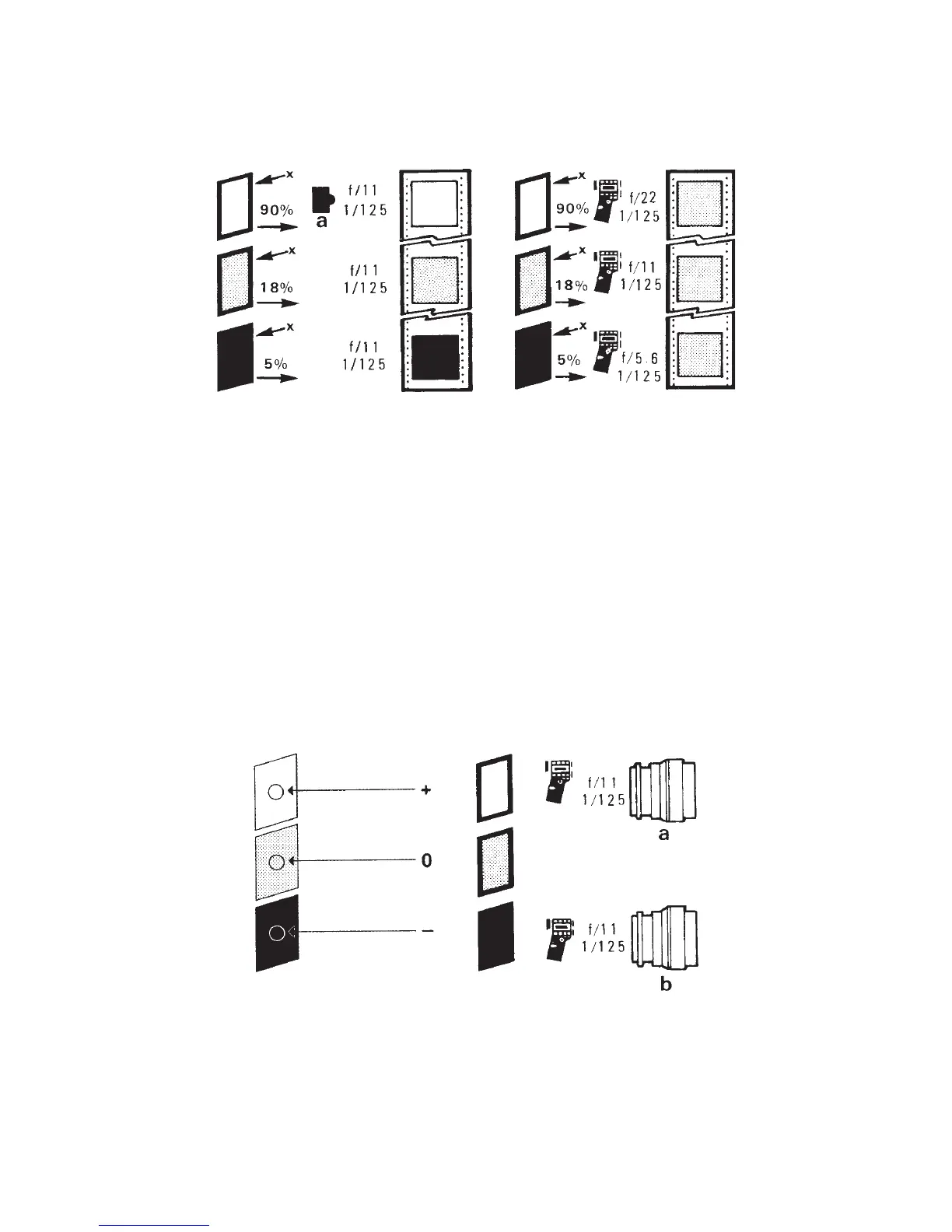Achieving Perfect Exposures in Digital and Film Photography 277
can be made from the camera position. You must have a clear understanding of how these
meters measure the light.
In a refl ected meter reading, you measure the light refl ected off the subject. The meter
reading, with the meter pointed at the subject, is now determined not only by the amount of
light falling on the subject but also by the amount of light refl ected from the subject. With any
refl ected meter, built-in or handheld, a bright subject gives a higher reading than a dark sub-
ject even if the same amount of light falls on both. The difference can amount to as much as
four or fi ve EV values or f stops (see Figures 15-1, 15-2, 15-3, and 15-4). The photographer now
Figure 15-2 Incident and refl ected meter readings. An incident exposure meter gives the same
aperture and shutter speeds for white, gray, and black subjects, and these settings record
white as white, gray as gray, and black as black (left). Refl ected meter readings differ for white,
gray, or black, even though the same amount of light falls on all three. If you set the lens for
the white reading (f/22,
1
/
125
second), white is recorded as gray, not white. A lens set for the
black reading (f/5.6,
1
/
125
second) also records black as gray, not black, and so does a reading
of gray at f/11 and
1
/
125
second (right).
Figure 15-3 Refl ected meter readings. A refl ected light meter reading is correct only when taken
off a subject area of average brightness refl ecting about 18% of the light. Exposure must be
increased for brighter subjects and decreased for darker ones (left). An incident meter reading
gives the same exposure (f/11 and
1
/
125
), whether held in front of a white, gray, or black
subject (right).

